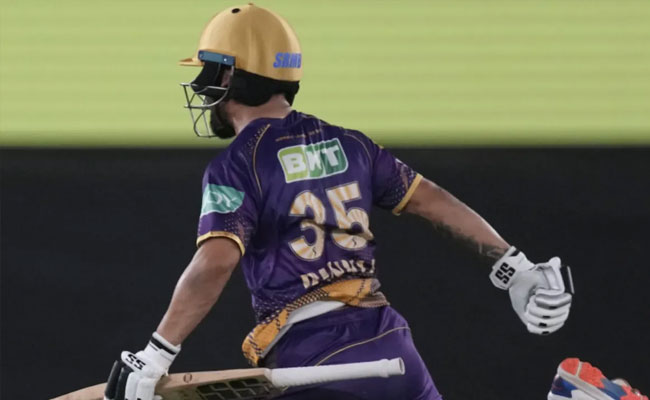
The Indian Premier League (IPL) has in all respects gone off extremely well. Crowds are back in full force in cities that are the home base for the franchisees.
Following the games through the multi-media channels available has been on the increase and in the last five days the matches have been engrossing with nail-biting finishes. The one that captured every heart with awe and astonishment, was the five sixes off the last over by Rinku Singh to win the match for Kolkata Knight Riders (KKR). This was a feat straight from a fairytale storybook or one from his team owner, Shah Rukh Khan's super hit film, "Pathan".
The T20 form of the game is developing at a rapid pace. In the last 15 years of its existence, the studies, research and innovation that have been put into finding the right formula for success are still languishing in thin air.
The latest trend to capture the importance of a batter i one's 'strike rate'. A batsman, when walking in, is identified by this most irrelevant statistic of his capability, based on the speed with which he scored runs in the past.
This takes me many moons back to when I was leading a young Vazir Sultan Colts side, many of whom went on to play for India, in the Moin-ud-dowlah cricket tournament in Hyderabad. This was a very prestigious tournament that had teams participating from all corners of India. The CEO, a very enthusiastic cricket lover, sat across from me to decide on a game plan for our match the next day.
In the stipulated overs that were permitted, the calculations were done in a typical corporate style of an upward trend per over, which resulted in our side scoring 400 runs. I tried and failed to make him understand that cricket is a game and that such an exercise is a futile waste of time. The reason that we enjoy the game of cricket is the uncertainty that surrounds it.
The following day our two dashing openers, both of whom later adorned the India cap, Krishmachari Srikanth and Raman Lamba, went ballistic and had a century opening stand in the first 15 overs of the match. The target for the total by the CEO was immediately revised and a score of 450 runs was scripted accordingly.
Unfortunately, the game is not one as imagined on paper and the reality was that we got all out for 250 runs. An appropriate idiom came to mind, "If wishes were horses, beggars would ride".
This is precisely why one questions the sudden importance of the strike rate. Cricket has so many other parameters that a batsman is subjected to. The great Vijay Merchant, very appropriately, highlighted in the past that a batsman is as good as the last innings they played. Every innings thereafter is a new day.
The top T20 batter in world cricket, presently, is India's Suryakumar Yadav. One has in the past seen his fabulous repertoire and skill while batting especially in T20 cricket. At present, he is passing through a complete loss of form and he needs to get himself out of it rather than being associated with his stupendous strike rate. This is a good example of the strike rate going awry.
T20 cricket is moving towards the popular game of baseball in the United States. The analysis and data collection all revolved around the way the game of baseball has adapted itself. As one cricketer very rightly stated that when we take the stance, one feels one is ready to "strike" as in baseball rather than on the cricket field.
The worry is that the delicate skills of placement, and wristy stroke-play are being overpowered by mighty hits and slogs. "Power hitting" is all that will come to be. In the future, the distance that one hits over the fence may get a batter an additional bonus run. The technology of bats today, together with the shorter boundaries at most venues, makes it easier for one to hit the ball over the fence.
One feels sorry for the bowlers, as with stricter bowling and field restrictions, as Ravichandran Ashwin rightly said, the bowler is at the mercy of the batter. The new Impact Player law has further benefitted the batting side. The additional batter comes into prominence when the top order has failed. A bowling side is, thereafter, looking to get into the tail-enders. However, the extra batter does bring in that advantage, as a team can then decide on a conventional batter to enable them to get over the initial collapse or they can bring in a mighty striker if needed, later.
The great Mahendra Singh Dhoni has a strike-rate, one gathers, of 127.8 in T20 cricket. A very low one, for one who is known for his power-packed hitting. In his 200th IPL match a few days ago in Chennai against Rajasthan Royals, he nearly won the match for Chennai Super Kings (CSK) striking well over his stipulated striking number.
Dhoni has been successful not because of his strike rate but because he has a cricketing mind which he uses most effectively. Analyzing one's "cricket smartness" is more important. However, lightning has struck the "strike rate" at present and one wonders what is coming up next.
(Yajurvindra Singh is a former India cricketer. The views expressed are personal)












